“The Day of the Jackal” Cinematographer Christopher Ross Lenses Fatal Game of Spy vs Assassin
Eddie Redmayne stars as an unrivaled, anonymous assassin in The Day of the Jackal, a new Peacock series inspired by Frederick Forsyth’s 1971 novel. Reimagined in a contemporary setting, the Jackal is an English hitman pursued across Europe by Bianca (Lashana Lynch), a British intelligence officer determined to apprehend her target before he gets to his next hit.
Written by Top Boy’s Ronan Bennett and lensed for the first three of ten episodes by cinematographer Christopher Ross, BSC (Shogun, Terminal), The Day of the Jackal is big, cinematic television. Pushed on by the Jackal’s prowess, Bianca, an arms specialist, goes to unexpected lengths to hunt her prey, and the story turns into a twisting, cat-and-mouse thriller shot across London, Vienna, Budapest, Zagreb, and the Croatian coast. The hitman has an extraordinary talent for his work, but so does the MI6 operative, and as they each dig into their assignments, Ross creates a visual complement between their two worlds.
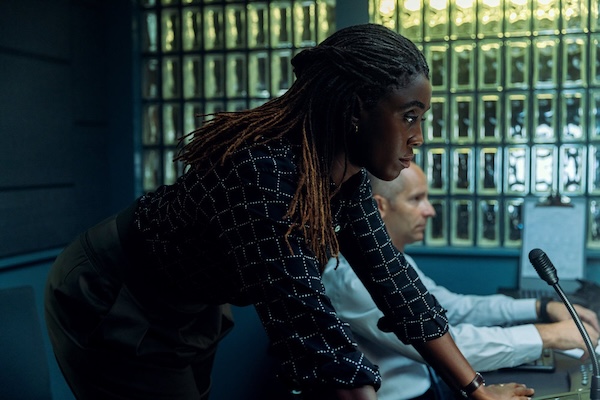
Both are living double lives necessary for their work and when they clock out, their visual environments change completely. We spoke with Ross about the inspiration he found in vintage spy thrillers, the complicated sets that gave the show its cinematic quality, and how he brought the audience into the Jackal’s world with a view down the same rifle site used by the assassin.
Did you know going in how cinematic the show would turn out?
I’ve worked with Brian Kirk, the director, a couple of times before, and with Ronan Bennett, the writer, and so when I first read the script, I could see that it had an interior style to the characterization, and then there was the potential to expand that to a big exterior style. The one thing I know about Brian is that he loves to make bold statements, so that’s what we were trying to do.
Given the range of filming locations across Europe, was there one location that was particularly memorable or difficult?
Austria had its two challenges. One of the first main assassination attempts in the opening half an hour was on a rooftop in Vienna. The big challenge was to do the cable cam drop down the side of the building. We had a decelerator rigged, and it was constructed for the stunt performer to do the cable maneuver. We had to build a special rig off a construction crane off the side of the building to repeat the move. With shots like that, it’s always really simple to have the idea. I go, Oh, wouldn’t it be fun if we just jumped off the side of the building with the character? That idea then involves a thousand emails to various building contractors, architects, and engineering companies to sign off on our ability to do it. And then, at the Austro-Hungarian border, we had to reignite the scene at the border crossing between Germany and France in the first episode. That border crossing was closed down about 25 years ago when Hungary joined the European Union. We had to rebuild the derelict buildings and re-fire up all of the power. The challenge was to bring it to life back from the dead. It’s one of my favorite sequences. It’s the first time you get a really tense moment of cat and mouse in the Jackal storyline.
There’s also a real sense of intimacy as the Jackal plies his trade. How did you develop that?
One of the big references for anyone who wants to make any form of espionage thriller are the films of Alan Pakula, such as The Parallax View. One of the things we wanted to play with was the concept of being watched and not being watched, of being inside someone’s universe and outside their universe. The Jackal, because he’s such a lone wolf, has basically no one tracking him. When he’s carrying out his assassinations, we’re very much in his sphere of influence, inside his mind. And then, at times, we feel he’s on the cusp of being spotted; that’s when we transition into a more voyeuristic perspective. That was a very conscious choice of lens design. We wanted the audience to feel they were in each protagonist’s shoes. That first-person visceral narrative was a conscious choice so we could jump into a more espionage-style technique. Another reference we used a lot, although we didn’t use zooms anywhere near as much as they did, was the Spielberg film Munich. That film has a beautiful, casual espionage business to personal life transition, and we wanted to echo that. The Jackal’s quite a conundrum of a character. He’s an exceptional liar who’s almost permanently playing some kind of pantomime. We wanted to blur the lines for that character as to what is the real truth and does he even believe his real truth.
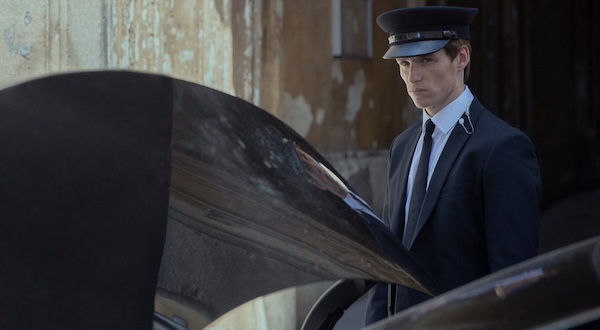
How did you create the visual contrast between the Jackal’s work and personal life?
One of the tricky elements of the Jackal is to try, without throwing up a huge chyron that says Spain or Munich, [was to make it so] that you immediately know that the blue and the blacks are Munich, the golden highlight and bronze in the mid-tones is Spain. The idea was to delineate the spaces in a geographical sense and also delineate the two sides of Jackal’s life. The scene where that is most prevalent is in a FaceTime phone call between Nuria and the Jackal. He’s framed in an idiosyncratic way; she’s framed more conventionally. It’s a way to press some psychological buttons that allow an audience into his twisted mind.
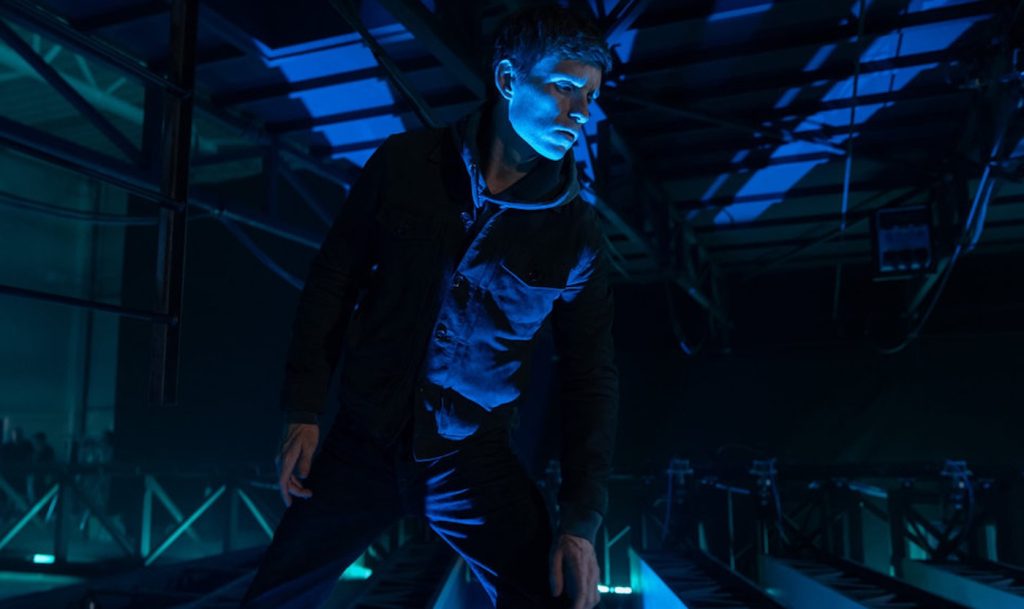
There’s a parallel between the Jackal’s work and Bianca’s. Was that intentional?
Absolutely—the idea being that if you are a hired assassin and execute people for business reasons, or you work for MI6 or the CIA, then your business is fabrication, your business is lies. The work-life balance you have will always be off-kilter because if you’re undercover as an MI6 operative, your family will never know that half of your life. He’s the hunted, she’s the hunter, and they switch and flip, and that was the idea behind creating that duality.
How do you approach the shots we see through the gun site?
I get really nerdy about these sorts of things. In episode one, the Jackal takes the longest shot that’s ever been taken, which, from memory, is 3.8 kilometers, I think. At that sort of distance, there are so many things that affect the shot. Eddie and I geeked out over some old textbooks about rifle sites and riflery from the First World War. Ultimately, all those things are about trying to match the focal length of the rifle site and then composite the graticule that we like the most over the imagery. For that hit, it was a 1200mm lens on a stabilized head that we rigged on the roof of a building. I think we were only 400 meters away, so nowhere near the actual distance the shot was supposed to be, but that’s the idea, trying to channel, as I’m operating the camera, my inner sniper. You get to play a little character all of your own.
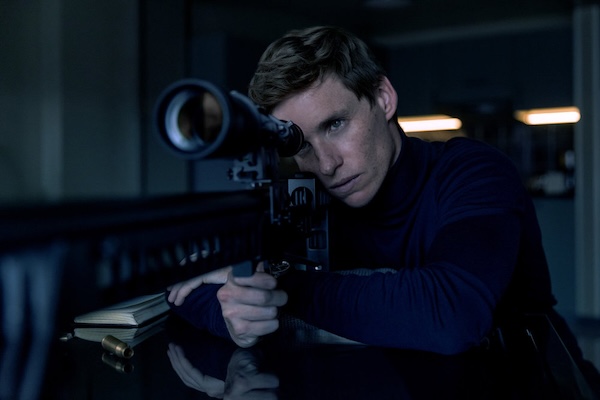
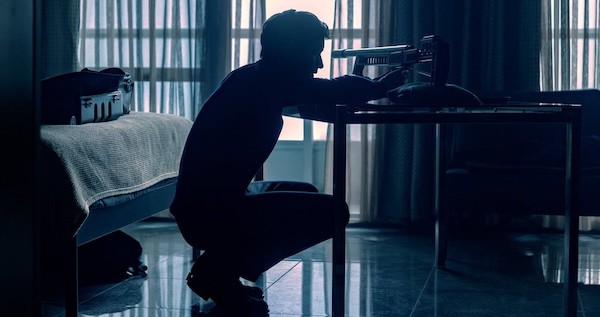
For more on Universal Pictures, Peacock, and Focus Features projects, check out these stories:
Lupita Nyong’o to Star in Christopher Nolan’s Top-Secret Next Film
“Wicked” First Reactions: A Dazzling Adaptation That Conjures the Magic of Movies at Their Best
Featured image: THE DAY OF THE JACKAL — Episode 105 — Pictured: Eddie Redmayne as The Jackal — (Photo by: Marcell Piti/Carnival Film & Television Limited)



